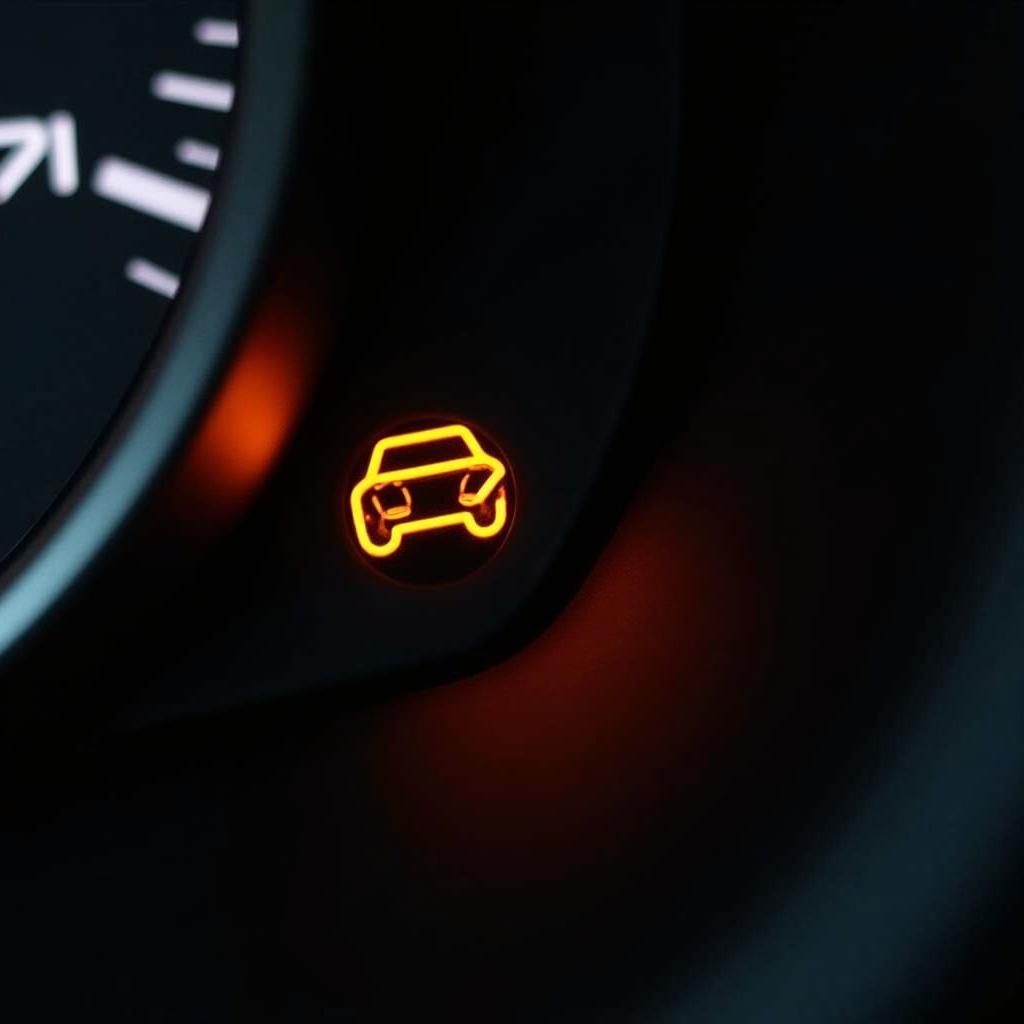Understanding your car’s dashboard can feel like deciphering a secret code. Those illuminated symbols, often cryptic and colorful, are crucial for maintaining your vehicle’s health and performance. This guide dives deep into the world of car service symbols, providing a comprehensive understanding of their meanings and the actions you need to take.
Decoding Your Dashboard: Common Car Service Symbols
Car manufacturers use a standardized set of symbols, regulated by international standards, to ensure consistent communication across different makes and models. However, some variations may exist. Familiarizing yourself with these symbols is the first step to proactive car maintenance.
The Service Required Light: What Does it Mean?
One of the most common symbols is the ubiquitous “service required” light. This light doesn’t pinpoint a specific issue but indicates that your car is due for routine maintenance based on mileage or time elapsed since the last service. This could include an oil change, filter replacement, or a general inspection. Ignoring this light can lead to more serious problems down the line. Similar to the information found on service required car dashboard symbols and meanings, understanding this light is crucial.
What triggers the service required light? The light is typically triggered by the car’s internal computer based on pre-programmed intervals. It’s important to consult your owner’s manual for specific service intervals recommended for your make and model.
Oil Pressure Warning: A Critical Alert
The oil pressure warning light, often represented by an oil can, indicates low oil pressure. This is a serious issue that requires immediate attention. Continuing to drive with low oil pressure can cause significant engine damage. Stop driving immediately and check your oil level. If the level is low, add oil. If the light persists, have your car towed to a mechanic to diagnose the problem.
Why is low oil pressure dangerous? Oil is vital for lubricating the engine’s moving parts and preventing excessive wear and tear. Low oil pressure can lead to metal-on-metal contact, causing friction, heat, and ultimately, engine failure.
Brake System Warnings: Ensuring Stopping Power
Several symbols relate to the brake system. A common one is the brake warning light, which can indicate low brake fluid, a problem with the anti-lock braking system (ABS), or a malfunctioning parking brake. Addressing brake issues promptly is crucial for safety. For further information, explore resources like recommended service intervals & content cars.
What should I do if my brake warning light comes on? If your brake warning light illuminates, pull over safely and check your brake fluid level. If it’s low, top it off. However, a low fluid level can suggest a leak, requiring professional attention. If the light persists or you experience any changes in brake performance, have your car inspected by a qualified mechanic immediately.
Tire Pressure Monitoring System (TPMS): Maintaining Optimal Tire Inflation
The TPMS light, often shaped like a tire with an exclamation point, indicates low tire pressure. Maintaining proper tire pressure is essential for fuel efficiency, tire longevity, and safe handling. You can check your tire pressure with a gauge and inflate them to the recommended level. More information on related icons can be found at car servicing icons.
How does TPMS work? TPMS uses sensors within each tire to monitor pressure and transmit data to the car’s computer. When the pressure drops below a certain threshold, the warning light activates.
Beyond the Basics: Other Important Car Service Symbols
Numerous other symbols can appear on your dashboard, including those related to the engine cooling system, charging system, airbag system, and emissions control system. Understanding these symbols can empower you to address potential problems early on.
“Regular maintenance is the key to a long and healthy car life,” says John Smith, Automotive Engineer at CarTech Solutions. “Understanding your car’s symbols is the first step in preventative care.”
Conclusion: Staying Informed for a Smooth Ride
Recognizing car service symbols is crucial for maintaining your vehicle and ensuring safe driving. Staying informed about these symbols allows you to address potential problems promptly, preventing costly repairs and ensuring a smooth, reliable driving experience. Remember to consult your owner’s manual for a complete list of symbols specific to your car model. You can also learn more about car insurance related icons at car insurance services icon. Staying informed is the key to proactive car care. For specific concerns like a service sign, you can find more information at service sign in car.
FAQ
-
What should I do if I don’t recognize a symbol on my dashboard? Consult your owner’s manual or contact a qualified mechanic.
-
How often should I have my car serviced? Refer to your owner’s manual for recommended service intervals.
-
Can I ignore the service required light? No, ignoring it can lead to further problems.
-
Is it safe to drive with the oil pressure warning light on? No, stop driving immediately and address the issue.
-
How can I check my tire pressure? Use a tire pressure gauge and compare it to the recommended pressure listed in your owner’s manual or on a sticker inside the driver’s side doorjamb.
-
What if my brake warning light comes on? Pull over safely and check your brake fluid level. If the light persists, have your brakes inspected.
-
What does the TPMS light mean? It indicates low tire pressure. Inflate your tires to the recommended pressure.
“Understanding your dashboard symbols can save you time, money, and potential headaches down the road,” advises Sarah Jones, Lead Mechanic at AutoCare Experts.
Need further assistance? Contact us via WhatsApp: +1(641)206-8880 or Email: [email protected]. Our 24/7 customer support team is ready to help.


